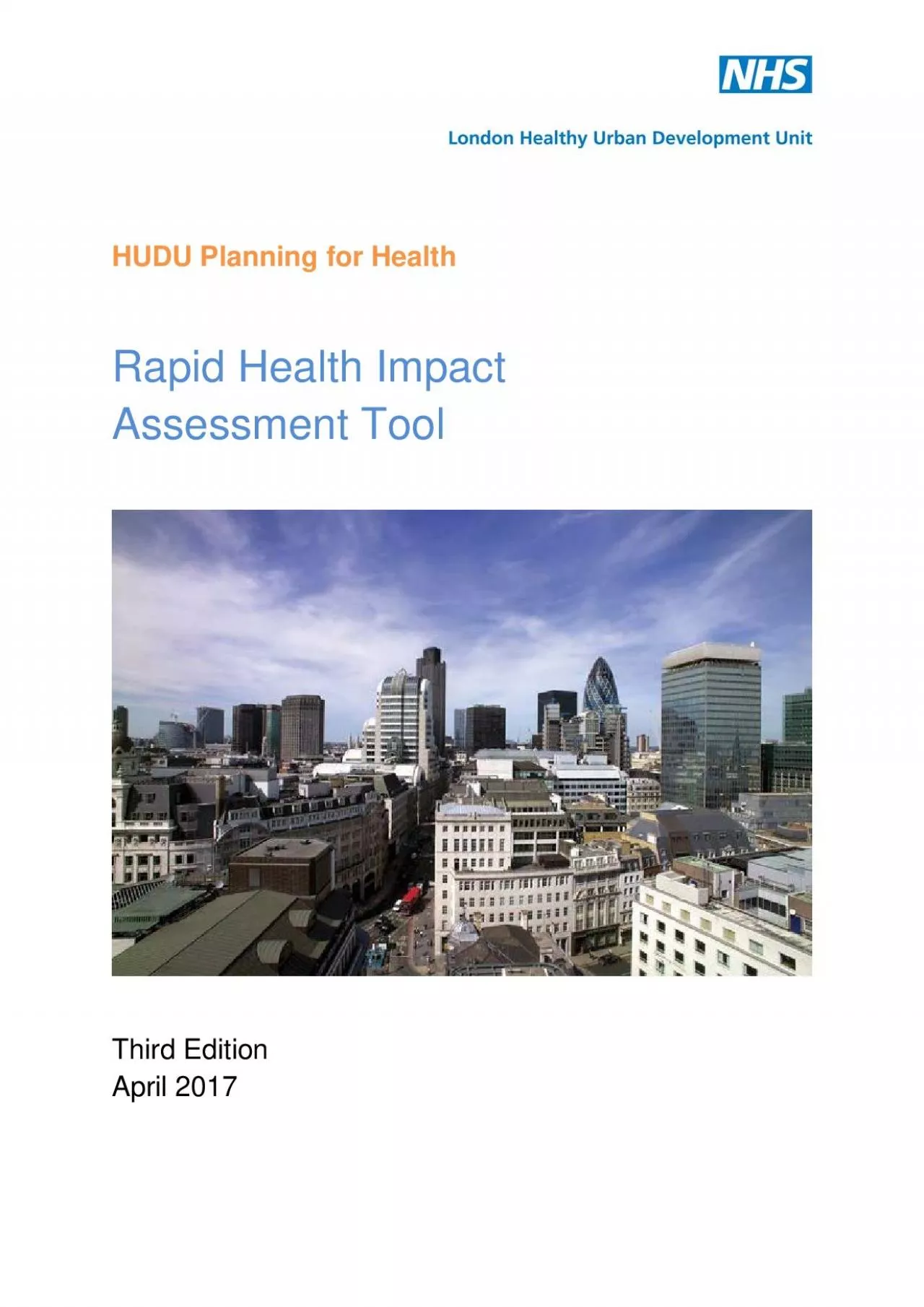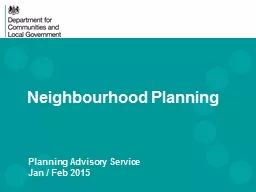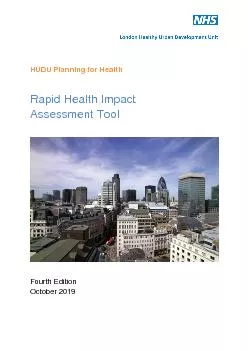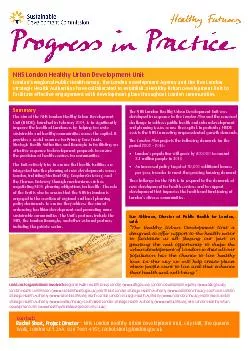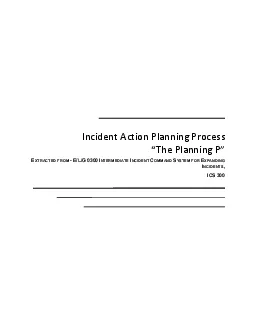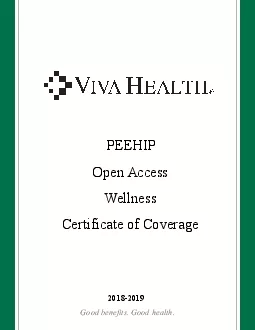PDF-HUDU Planning for Healthapid ealth mpactssessment
Author : emmy | Published Date : 2021-09-08
Third EditionApril2017NHS London Healthy Urban Development UnitRapid Health Impact Assessment TContentsBackgroundUsing the assessment toolAssessing the plan or proposalSection
Presentation Embed Code
Download Presentation
Download Presentation The PPT/PDF document "HUDU Planning for Healthapid ealth mpact..." is the property of its rightful owner. Permission is granted to download and print the materials on this website for personal, non-commercial use only, and to display it on your personal computer provided you do not modify the materials and that you retain all copyright notices contained in the materials. By downloading content from our website, you accept the terms of this agreement.
HUDU Planning for Healthapid ealth mpactssessment: Transcript
Download Rules Of Document
"HUDU Planning for Healthapid ealth mpactssessment"The content belongs to its owner. You may download and print it for personal use, without modification, and keep all copyright notices. By downloading, you agree to these terms.
Related Documents

